First off, thanks to the Sri Chinmoy Marathon Team and all their amazing volunteers for putting on a great event. The race is held on a scenic and blazing fast paved path around a lake in Rockland Lake State Park. There were three events with the 24-hour and 12-hour races starting at 8am and the midnight marathon starting at. . . midnight. Even though the loop is only 2.95 miles, there were two water only aid stations in addition to the main one at the start/finish.
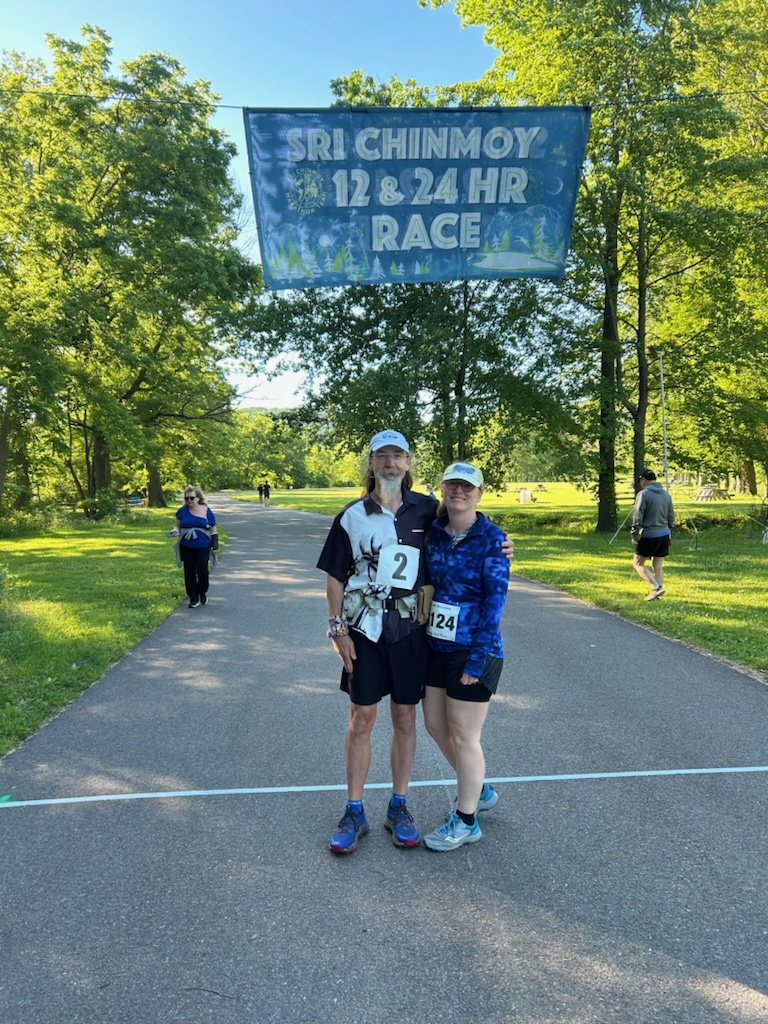
The start/finish area had an awesome vibe all day (and night) long. Crews set up along the path leading out onto the course so you had people cheering you on around the clock. In addition to the aid station, there were medical tents, a TV screen showing live results, and an honest to goodness announcers table. Every time you came up to the finish (or start depending on whether you’re a half full kinda person), they would announce over a speaker your name, lap number, and total mileage. Very cool.
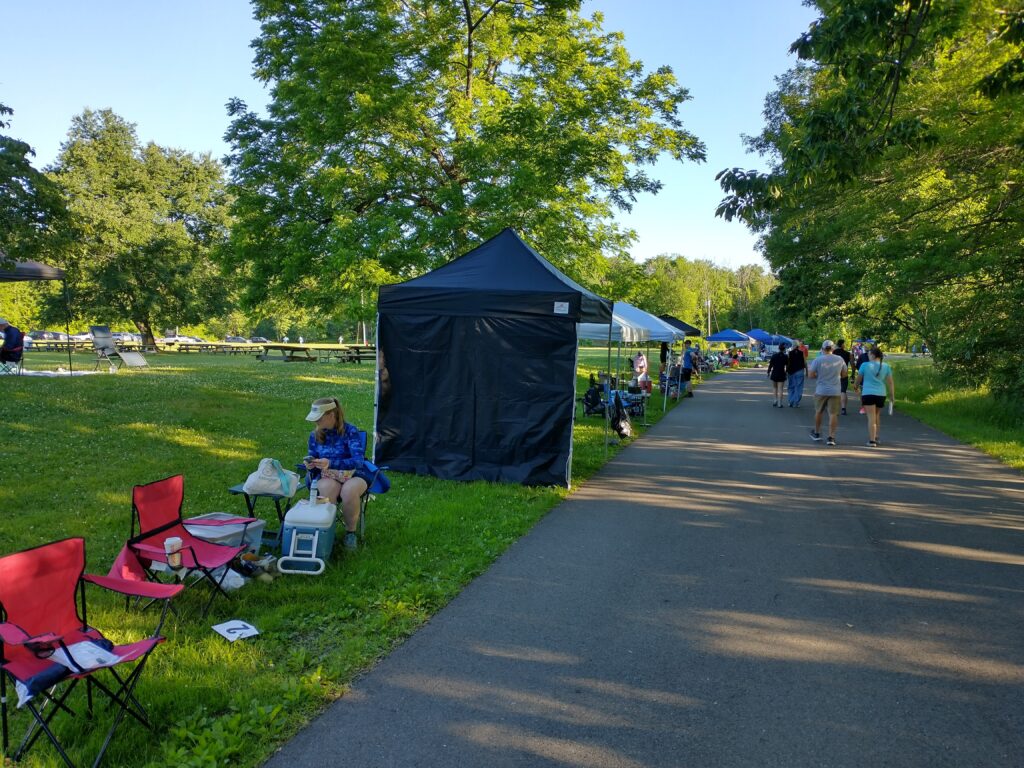
All of the tracking is done manually though so they require your bib to be worn on the front of your shirt. I have been a folded bib worn on shorts guys since I got into ultras. That’s how I saw other runners wearing their bibs and I definitely wanted to be one of the cool kids so that’s what I did. If you were to ask me the single best way to identify an ultrarunner, it wouldn’t be their hair style, shoe choice, quantity of tattoos, or training regimen. It would be where do they wear their race bibs. Front of shirt is for charity 5Ks, not ultramarathons. It’s a ridiculous thing to have a hang-up about. Trust me, I know. Probably the second best way to identify an ultrarunner though is by respect. Respect for fellow runners. Respect for nature. And respect for event organizers and how they want to run their races. Frankly, if I’m letting the placement of my bib bother me, then I’m not in the right mindset to run an ultra in the first place. So I set aside my preconceived notions on bib placement and proudly wore my un-folded bib on the front of my shirt. I’ll never know whether I received good karma from this during my race, but I like to think it didn’t hurt.
Actionable Advice for Pacing
When people give advice on pacing in ultras you typically either get “start slow, then slow down” or “walk the hills”. The first is akin to telling someone to move their arms and legs in order to swim and the second isn’t applicable to a course with less than 10 feet of elevation gain/loss per mile. Start easy sounds good, but most people’s definition of easy is their long run pace. From my experience, that’s way too fast for a hundred mile/24 hour effort.
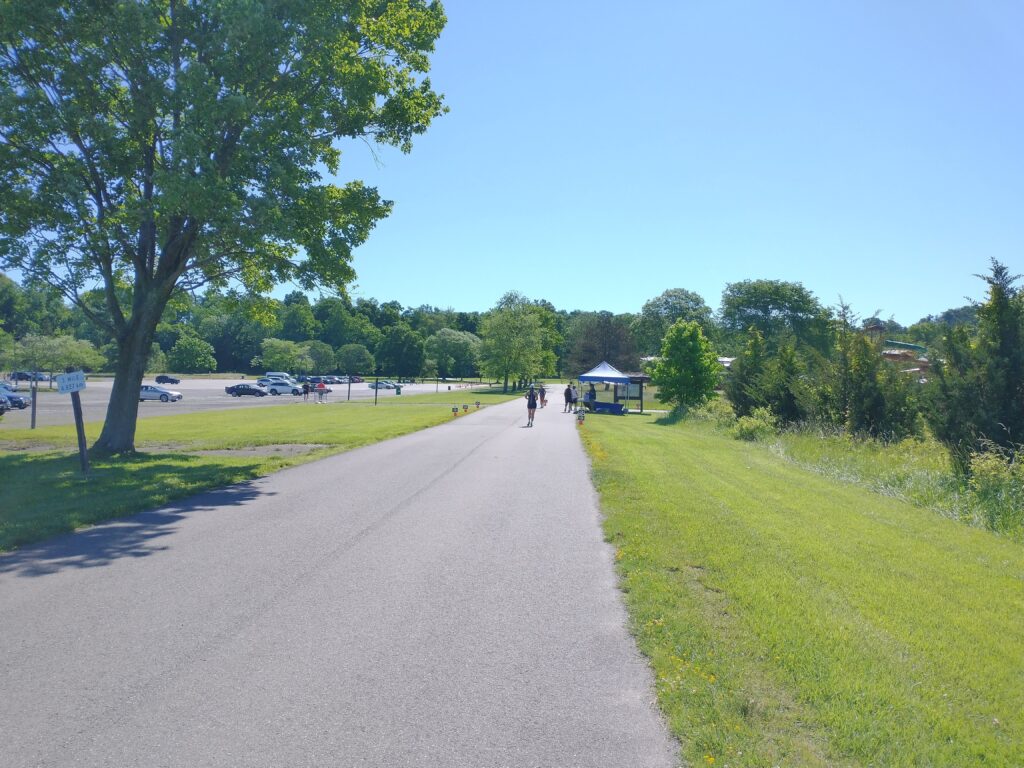
After much trial and error, I’ve settled on 30% slower than long run pace. My last couple long runs were a bit below a 9 minute pace, however on hillier terrain. Adjusting for that, my long run pace was probably about 8.5 minutes/miles. Add in 30% and my target starting pace was 11 minutes miles. Now I can’t run that pace on flat roads efficiently so I immediately start with a run/walk strategy right from the gun. I don’t like a regimented ratio (i.e. 3:1, 10:2, etc.) as I hate to be a slave to a beeping watch so I focus on average pace and add in walk breaks when necessary to get my pace up to the target level. Now you’re still a slave to some extent, but it allows you to be more flexible.
The Part Where I Get Around To Talking About My Race
The first couple laps of a looped course are all about getting a lay of the land. Turn here. Walk this. Run this section. What’s on the menu at the aid stations. Some (most?) people find this monotonous, however I find it comforting. It takes quite a bit of stress out of the equation and just lets you move.
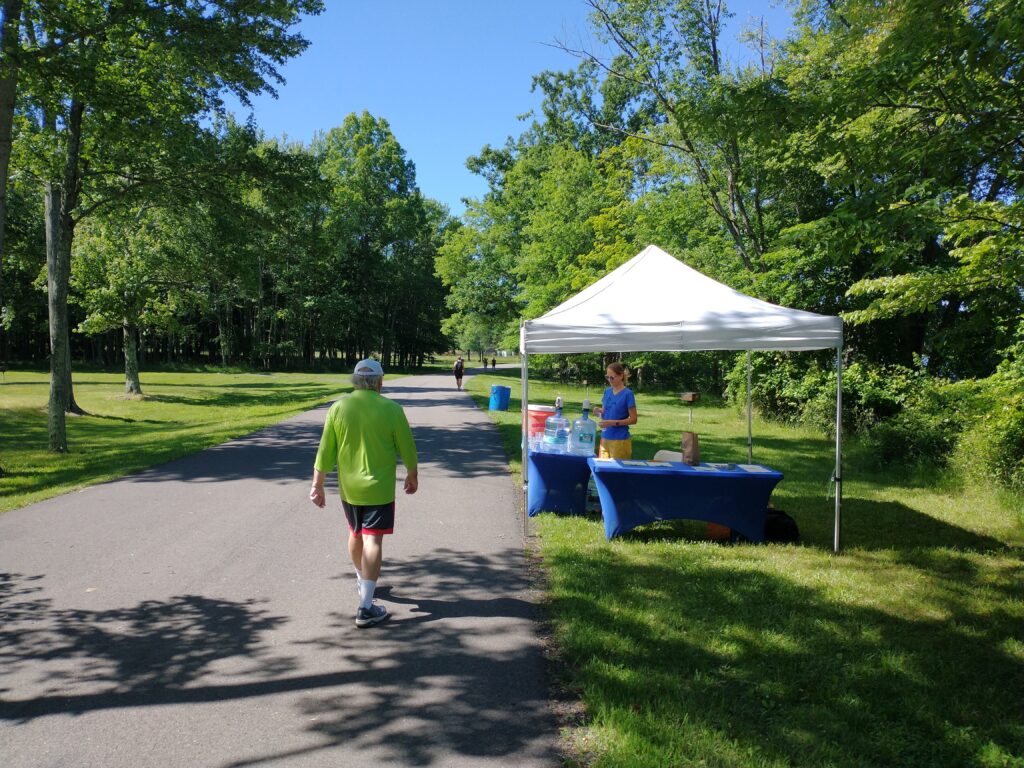
The morning rolled along without much to note outside of me getting lapped early on loop 3. John (bib #1 to my bib #2) was the only other runner there that I knew. I’m not normally a competitive person in ultras because I’m typically so far back I’m not competitive. I thought there was a chance I could put up the most miles, but the focus was more on what I could accomplish personally rather than in relation to others. So I offered John some encouragement and stuck to my 11 minute pace plan.
I didn’t bother checking my placing until about lap 10. At that point, I was 5th male and probably 6th or 7th overall. I slowly worked my way up to first male (2nd overall) over the next 3-4 laps and finally moved into the overall lead somewhere in the 16-18 lap range. This move up the leaderboard was entirely due to consistent pacing. For the first 30 miles, I fought to keep my pace out of the 10s by adding in extra walk breaks. I then spent miles 30-40 fighting to keep right at an 11 minute pace. And then it was all about managing the fade.
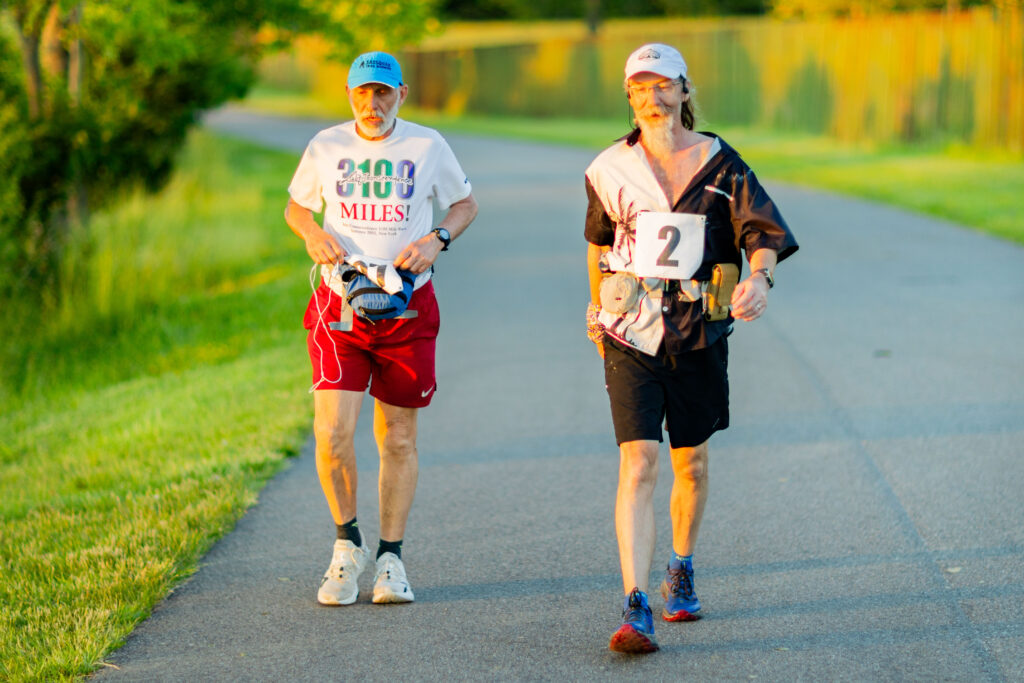
Part of my struggle was my nutrition started to go sideways on me. It was hot out and I was doing well with steadily getting calories down until I ate a mouthful of cashews. Cashews were great only a couple hours previously, but suddenly my stomach decided no mas. I quickly pivoted from my liquid calories (Perpetuem, Coke, apple juice, OJ) and went straight water for the next 6-10 hours (apologies, I wasn’t taking notes during the run) grabbing 2 cups at each aid station: one to drink and one to dump on my head.
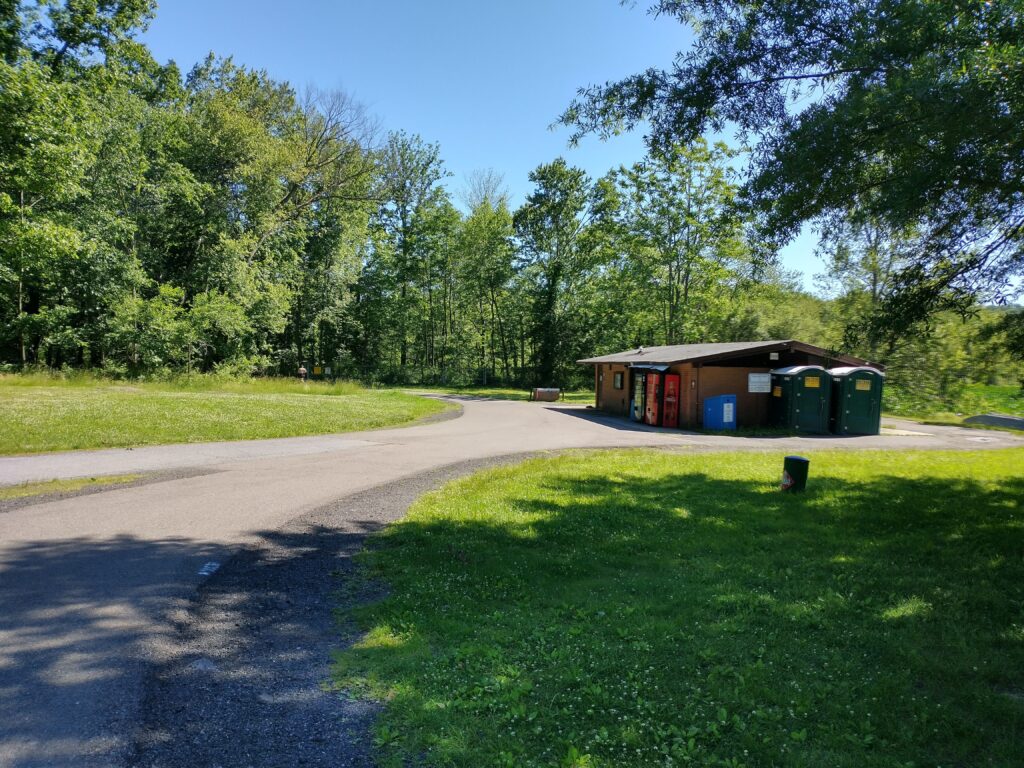
My calories now came from bananas, orange/apple slices, and potatoes. Best guess is that I went from getting 200-300 calories/hour to maybe about 100. Conventional wisdom is that this isn’t enough to perform well, however my experience is that it’s better to get a little calories in and feel good than try and force down 200-300 calories regardless. Feel good to move good is my motto. And I’ll admit this won’t work for elites out there pushing a hard effort, but this will work if you’re keeping things chill. The short loop format kept it easy to quickly grab a couple different flavors every 35 minutes. Orange slice/potato one loop followed by apple slice/banana the next. Eat one and pack one to eat halfway around the loop. Rinse/repeat with maybe a slight variation if the watermelon or rice decided to look appetizing.
The race had signs up for the traditional ultra distances, however as my Garmin beeped 50 miles, the sign was nowhere in sight. Turns out it was half a mile further down the course. And then I remembered this was a marathon certified course meaning I needed to exactly run the tangents in order to run the distance. Guess what I wasn’t doing with all the curves on the course along with dodging other runners/pedestrians? Well, 1% wasn’t too bad and that ended up being how much I was off at the finish so I obviously didn’t get better as I went along. At this point, the average pace on my watch of 11:05 (11:12 actual based on course distance) was very close to my 12 hour A goal of 11 minutes. I rolled through 100k at 11:18 actual pace (11:41) so while I had slowed down a little, I was still moving very well.
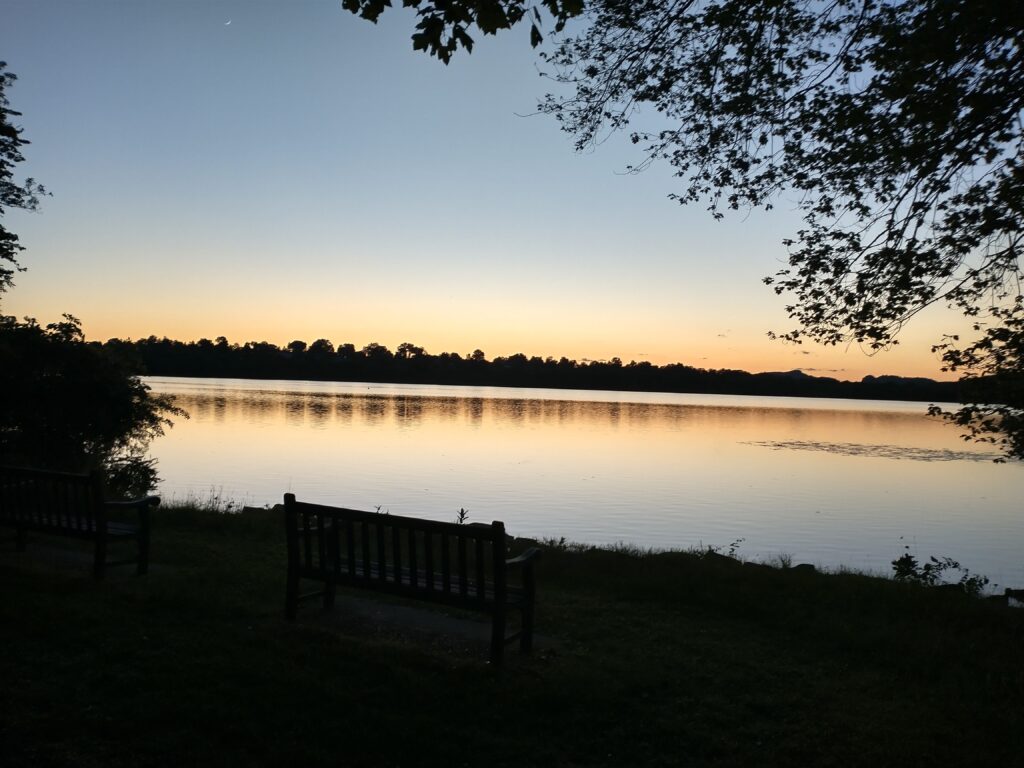
There were a couple things that kept me moving well once the sun went down. First, my familiarity with the course by this point meant that I knew what sections I ran and which ones I walked. A lot of times you’ll get late in an ultra and it’ll be a little hard to tell whether you should be running or walking and you’ll just default to the easier of the two. I didn’t have that issue and was able to consistently run what I had been running.
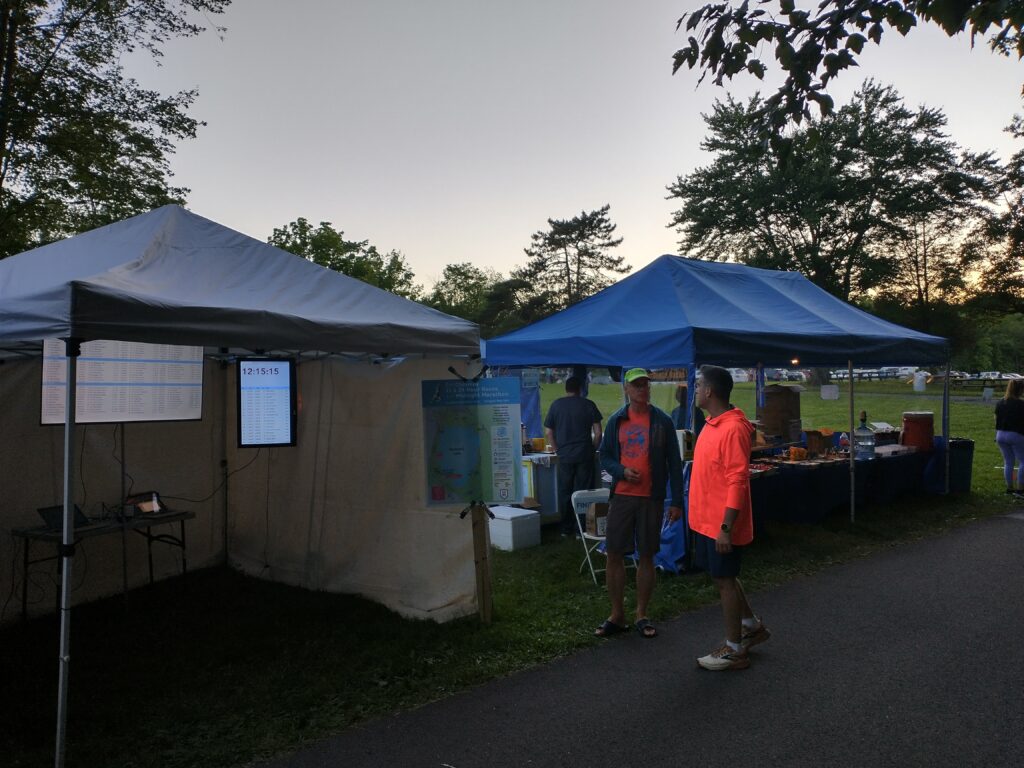
I was also using the leader board for motivation. Even though I was in the lead and slowly adding laps on the other runners, it never really felt safe. I kept pushing assuming all the runners right behind me were about to rally back hard. So a huge thanks to all those who kept grinding throughout the night. A decent part of my success is due to your efforts.
Just about the only thing that went wrong during my race was my headlamp. It started randomly going out or getting very dim right before midnight. Sometimes it would happen every couple minutes and others it would be fine for a lap or more. It always came back on immediately and it never impacted my pace, but was mildly annoying. No complaints though as I’d wager every other runner would trade their issues for mine.
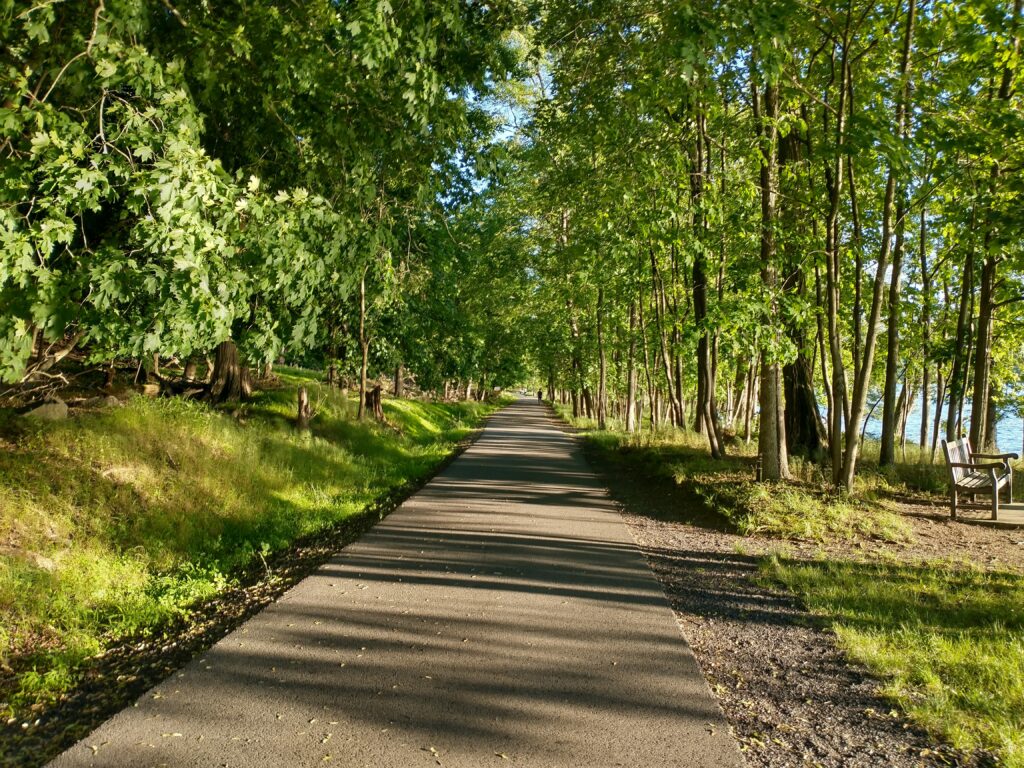
I reached 91 miles at 1:40am, which translated into three 40 minute laps for a hundred mile PR of slightly more than an hour. I was able to use this to push a little bit and hit the 100 mile sign right at 3:30am or 19.5 hours. Breaking 20 hours (12 minute pace) has been a dream for a long time and I was really excited to reach this goal. I slowed down a bit on lap 35 and then my legs really started to feel tired the lap after that. I attempted to do some finishing math and figured I had 115 locked up with 120 a stretch. Well, the stretch got stretchier and stretchier as I was barely able to maintain a 14-15 minute pace on the last 3 laps.

It was early on during these last 3 laps that I decided 115 was going to be the number. I crossed the start/finish for the last time after 22 hours and 55 minutes. At that point, I could “easily” have walked another lap for 118 miles or possibly pushed for 119, but I was more than satisfied with what I had been able to accomplish. It was good enough. Sure objectively 118 or 119 is better than 115, however subjectively this was my perfect race. Here I am a couple days later thinking back and I’m tearing up just thinking about my run. After 10 years of running ultras, I was finally able to put it all together and run my best race. I squeezed every conceivable mile out of my body over those 24 hours. If this was the capstone to my ultra career, I would be completely satisfied.
But I’m already signed up for Viaduct 100M next month so I might as well run it. And then there’s my beloved Eastern States after that. . .

Congratulations Phil, I enjoyed the race report.
This was a great read Phillip! It was nice to meet you and run out there with you in the middle of the night:-) Congratulations!!